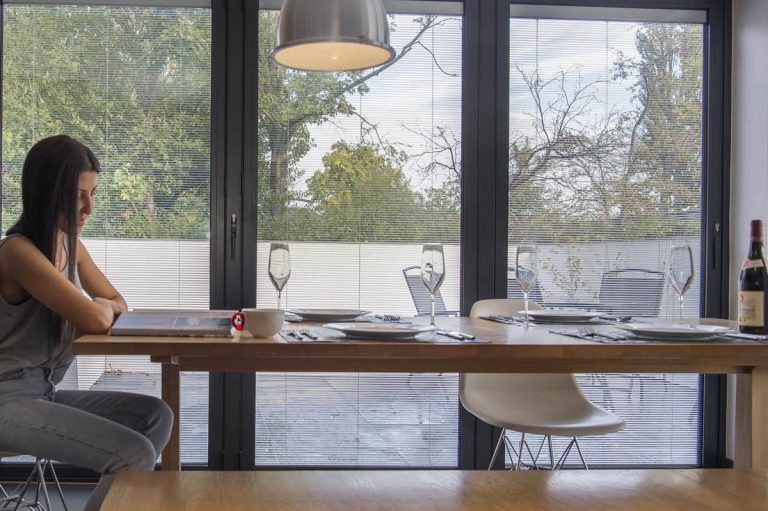Despite the government’s promise to wage war on fuel poverty across the housing market in England via the implementation of the Energy Company Obligation (ECO) initiative back in January 2013, research by estate agent comparison site, GetAgent.co.uk, has found just 7% of properties are in receipt of ECO measures. GetAgent.co.uk analysed data on households in receipt of ECO measures since the scheme launched and what this equates to as a percentage of total dwellings across each area of England. The ECO was a government initiative introduced in January 2013 to help improve energy efficiency and support those at the sharp end of fuel poverty in England. The ECO set obligations for the big energy providers to install insulation and heating measures and to help reduce heating costs and energy usage. The research by GetAgent.co.uk shows that 1,794,601 households across England are in receipt of ECO measures, just 7.4% of the total 24,413,501 dwellings. The North West has seen the biggest benefit from the scheme, with 11.5% of all homes in receipt of ECO measures, with the North East (10.1%) and West Midlands (10%) also seeing a double-digit percentage of dwellings benefit. London has seen the lowest level of homes in receipt of ECO measures at just 4.5%, followed by the South East (5%). At local authority level, Blackpool has seen the highest impact with 21.2% of all homes benefitting from the ECO initiative. Other areas to see in excess of 20% of properties benefit include Bradford (21.1%) and Blackburn with Darwen (20.8%). Oldham (19.5%) and Burnley (18.6%) have also seen some of the biggest impact from the scheme. In contrast, London accounts for the top five areas with the lowest receipts of ECO measures, with Wandsworth seeing the least with just 1.2% of homes in the borough benefitting from the scheme. Outside of London, Mole Valley (2.4%), South Lakeland, Cambridge and Vale of White Horse have seen the lowest receipts of ECO measures since launch in 2013. Founder and CEO of GetAgent.co.uk, Colby Short, commented: “We could all benefit from making our homes as energy efficient as possible, but it’s important to remember that the ECO initiative is very much focussed on eradicating fuel poverty, rather than knocking a few quid off the average homeowner’s energy bills. So it’s only natural that there has been a greater focus on areas of the market where this help is needed most and so there is always going to be a regional disparity in terms of the number of households in receipt of these measures. In the same context, not every home will require this help and the near 1.8m households to have benefitted are no doubt very grateful for this helping hand from the government. However, while 7% of all households is a strong start, let’s hope the government continues to build on these foundations and use this initiative to further remedy the issue of fuel poverty from those suffering across the nation.” Table shows the total number of households in receipt of ECO measures between Jan 2013 and Dec 2020 as a percentage of total dwellings stock Location Households in receipt of ECO measures (to Dec 2020) Total dwellings 2019 Households in receipt of ECO measures as % of total dwellings North West 379,849 3,300,088 11.5% North East 125,419 1,236,808 10.1% West Midlands region 250,357 2,512,503 10.0% Yorkshire and the Humber 236,633 2,440,528 9.7% East Midlands 156,443 2,103,080 7.4% South West 149,779 2,603,367 5.8% East of England 140,188 2,705,425 5.2% South East 186,470 3,717,756 5.0% London 160,147 3,592,322 4.5% England 1,794,601 24,413,501 7.4% Source Gov.uk – Household Energy Effeciency Statistics Gov.uk – Live tables of dwellings stock Table shows the areas with the highest percentage of households in receipt of ECO measures as a percentage of total dwellings stock Location Households in receipt of ECO measures (to Dec 2020) Total dwellings 2019 Households in receipt of ECO measures as % of total dwellings Blackpool 14,879 70,187 21.2% Bradford 45,674 216,360 21.1% Blackburn with Darwen 12,728 61,287 20.8% Oldham 18,587 95,505 19.5% Burnley 7,655 41,080 18.6% Pendle 7,337 40,368 18.2% Hyndburn 5,895 36,891 16.0% Walsall 18,514 116,248 15.9% Tameside 16,393 102,993 15.9% Birmingham 67,815 441,536 15.4% Hartlepool 6,764 44,250 15.3% Manchester 34,640 226,995 15.3% Middlesbrough 9,550 63,261 15.1% Leicester 20,515 137,116 15.0% Rochdale 13,161 93,703 14.0% Sefton 17,630 126,962 13.9% Sandwell 17,944 132,618 13.5% Knowsley 8,977 66,519 13.5% Bolton 16,005 124,444 12.9% Luton 10,251 80,024 12.8% Source Gov.uk – Household Energy Effeciency Statistics Gov.uk – Live tables of dwellings stock Table shows the areas with the lowest percentage of households in receipt of ECO measures as a percentage of total dwellings stock Location Households in receipt of ECO measures (to Dec 2020) Total dwellings 2019 Households in receipt of ECO measures as % of total dwellings Wandsworth 1,772 148,075 1.2% Richmond upon Thames 1,203 85,564 1.4% Kensington and Chelsea 1,555 87,726 1.8% Hammersmith and Fulham 1,617 89,186 1.8% Westminster 2,382 125,312 1.9% Mole Valley 939 38,772 2.4% South Lakeland 1,551 55,820 2.8% Cambridge 1,536 55,207 2.8% Vale of White Horse 1,647 58,669 2.8% Merton 2,388 84,570 2.8% Winchester 1,530 52,740 2.9% Epsom and Ewell 962 32,566 3.0% Waverley 1,632 53,752 3.0% Uttlesford 1,168 38,008 3.1% North Hertfordshire 1,887 57,471 3.3% East Hertfordshire 2,069 63,011 3.3% Tunbridge Wells 1,694 51,339 3.3% Reigate and Banstead 2,022 60,966 3.3% St Albans 2,027 61,047 3.3% Cotswold 1,501 44,938 3.3% Source Gov.uk – Household Energy Effeciency Statistics Gov.uk – Live tables of dwellings stock











